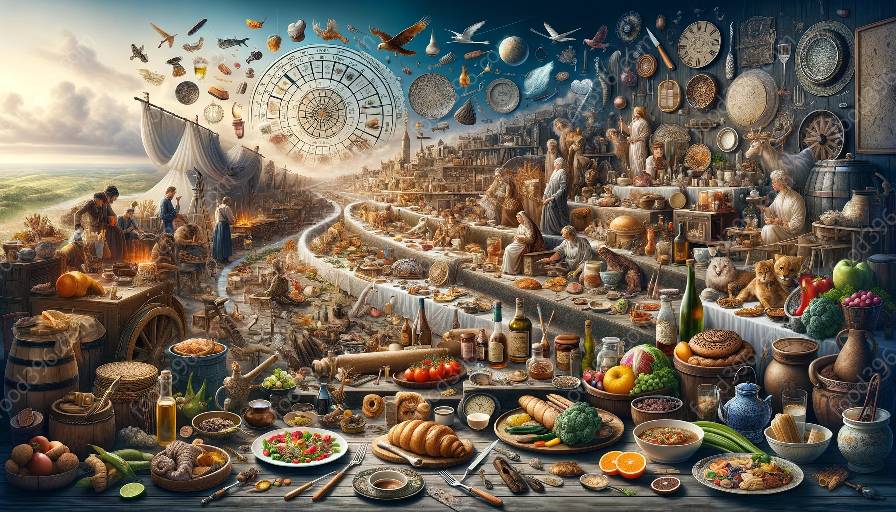Brazilian cuisine reflects the country's rich cultural and historical diversity, with each region offering unique flavors and culinary traditions. From the Amazon rainforest to the coastal areas, the regional cuisines of Brazil are a fascinating reflection of the country's history and geography.
1. The Amazon Rainforest
The Amazon rainforest is home to an incredible variety of ingredients, many of which are crucial to traditional indigenous cuisines. Indigenous communities in the Amazon rely on locally sourced ingredients such as fish, game meats, fruits, and vegetables to create flavorful and nutritious dishes that have been passed down through generations. Tucupi, a yellow sauce made from fermented manioc root, is a staple in Amazonian cuisine, and is used to add a tangy flavor to dishes such as pato no tucupi, a traditional duck stew.
1.1 History
The history of Amazonian cuisine is deeply intertwined with the traditions of indigenous communities that have inhabited the region for centuries. The use of native ingredients and cooking techniques has been passed down through generations, preserving the culinary heritage of the Amazon rainforest. With the arrival of European colonizers, new ingredients and cooking methods were introduced, leading to a fascinating fusion of indigenous and European flavors in Amazonian cuisine.
1.1.1 Traditional Dishes
- Pato no Tucupi: A duck stew flavored with tucupi sauce, often served with manioc flour.
- Moqueca de Peixe: A fish stew made with coconut milk and regional spices, a favorite in the coastal regions of Brazil.
- Vatapá: A shrimp and fish stew thickened with bread, coconut milk, and ground peanuts, a popular dish in the Amazonian state of Pará.
2. The Northeast
The Northeast region of Brazil is known for its vibrant and diverse cuisine, influenced by indigenous, African, and Portuguese culinary traditions. The cuisine of the Northeast is characterized by its use of seafood, tropical fruits, and bold flavors. The state of Bahia is particularly famous for its Afro-Brazilian cuisine, incorporating rich, spicy dishes that reflect the region's African heritage.
2.1 History
The cuisine of the Northeast has been shaped by centuries of cultural exchange, with influences from Portuguese colonizers, African slaves, and indigenous communities. The rich and diverse culinary traditions of the region are a testament to the resilience and creativity of the people who have inhabited the Northeast for generations. The abundant seafood and tropical fruits of the region have played a central role in shaping its culinary identity, with dishes such as moqueca de peixe and acarajé becoming iconic symbols of Northeastern cuisine.
2.1.1 Traditional Dishes
- Acarajé: Deep-fried balls of black-eyed pea dough filled with shrimp, vatapá, and caruru, a popular street food in Bahia.
- Moqueca de Peixe: A rich and flavorful fish stew made with coconut milk, tomatoes, peppers, and dendê oil, a staple of Northeastern cuisine.
- Bobó de Camarão: A creamy shrimp stew made with coconut milk, manioc, and spices, a beloved dish in the Northeastern states of Bahia and Pernambuco.
3. The South
The Southern region of Brazil is known for its strong European influences, particularly from Italian and German immigrants who settled in the area. The cuisine of the South is characterized by hearty dishes such as churrasco (barbecue), feijoada (a black bean stew with pork), and a variety of sausages and cured meats. The region's temperate climate and fertile soil have also contributed to the cultivation of wine, fruit, and dairy products, which play an essential role in Southern Brazilian cuisine.
3.1 History
European immigrants, particularly from Italy and Germany, have significantly influenced the culinary traditions of the Southern region. The arrival of these immigrants brought new ingredients and cooking techniques, which combined with the region's existing culinary practices to create a unique fusion of European and Brazilian flavors.
3.1.1 Traditional Dishes
- Churrasco: Brazilian barbecue, featuring a variety of meats grilled over an open flame and typically served with farofa (toasted manioc flour) and vinaigrette sauce.
- Feijoada: A hearty black bean stew featuring a range of pork cuts, sausage, and spices, traditionally served with rice, orange slices, and collard greens.
- Arroz de Carreteiro: A rice and meat dish influenced by the cuisine of Italian and German immigrants, featuring sausage, beef, and bacon.
4. The Southeast
The Southeast region of Brazil, encompassing states such as São Paulo and Minas Gerais, boasts a diverse and eclectic culinary landscape. The influence of indigenous, African, and European traditions is evident in the region's cuisine, resulting in a rich tapestry of flavors and ingredients. The Southeast is particularly renowned for its coffee production, as well as its traditional dishes such as feijoada and pão de queijo.
4.1 History
The culinary traditions of the Southeast have been shaped by a complex history of cultural exchange, colonization, and migration. The region's diverse immigrant populations, including Italians, Lebanese, and Japanese, have all contributed to the rich and varied culinary landscape of the Southeast. The fertile soil and favorable climate have also made the region a hub for agricultural production, with coffee, sugarcane, and tropical fruits playing a central role in shaping the culinary identity of the Southeast.
4.1.1 Traditional Dishes
- Feijoada: A hearty black bean stew featuring a variety of pork cuts, sausage, and spices, often accompanied by rice, orange slices, and collard greens.
- Pão de Queijo: Cheesy bread rolls made from cassava flour, a beloved snack and breakfast dish throughout the region.
- Virado à Paulista: A traditional dish from São Paulo featuring sautéed collard greens, pork belly, rice, farofa, and beans.

